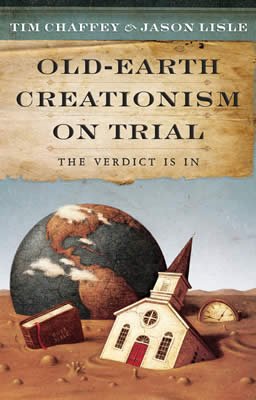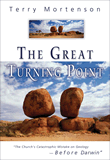
Other “Interpretations” of Genesis
Appendix A
The purpose of this section is to define some of the interpretive schemes that have arisen since the idea of vast ages became popular in the late 18th and early 19th centuries. Please bear in mind that old-earth theologies were essentially non-existent prior to 1800. This fact alone provides strong evidence that these views are not derived from the Bible. Instead, they are an attempt to accommodate the long ages promoted by uniformitarian science.
The Gap Theory
This was the first attempt to harmonize the biblical account of creation with the idea of vast ages. It claims that a huge time gap (perhaps several billion years) exists between Genesis 1:1 and Genesis 1:2. In the most popular “ruin-and-reconstruction” version, it is said that during this time Satan rebelled and led creation in rebellion against God. As a result, God destroyed this original creation with the flood of Lucifer. Gap theorists believe that Genesis 1:2 describes the conditions of the world following this flood.
A young Presbyterian minister, Thomas Chalmers, began to preach this idea in 1804. In 1814, he published this idea and the gap theory began to enjoy a great deal of acceptance in the Church. Gap theorists often argue that the word translated as “was” in most English versions of Genesis 1:2 should actually be translated “became” as in “the Earth became formless and void.” However, this is unwarranted by context. The gap theory suffers from a number of hermeneutical problems.
First, time cannot be inserted between Genesis 1:1 and Genesis 1:2 because verse 2 does not follow verse 1 in time. Verse 2 uses a Hebrew grammatical device called a “waw-disjunctive.” This is where a sentence begins with the Hebrew word for “and” (“waw” ו) followed by a noun such as the “earth” (“erets” ארץ). A waw-disjunctive indicates that the sentence is describing the previous one—it does not follow in time. In other words, verse 2 is describing the conditions of the earth when it was first created. Hebrew grammar does not allow for the insertion of vast periods of time between Genesis 1:1 and 1:2.
Second, Exodus 20:11 clearly teaches that everything was created in the span of six days—this is the basis for our work week. This passage clearly precludes any possibility of vast periods of time between any of the days of creation.
Third, most versions of the gap theory put death and suffering long before Adam’s sin. So the gap theory suffers from many of the same doctrinal problems as the day-age view. For a full refutation of the gap theory, please read Unformed and Unfilled by Weston W. Fields.1
Theistic Evolution
This view claims that God used evolution as a means of bringing about His creation. Conservative Christians typically reject this idea because it attacks the idea that Adam was made in the image of God and from the dust of the earth. Instead, he and Eve simply evolved from apelike creatures. Many liberal scholars accept this view and see no problem with incorporating evolutionary principles into the Bible.
Theistic evolution impugns the character of God by blaming Him for millions of years of death, bloodshed, disease, and suffering. A world with these things in it could hardly be called “very good.” As with day-age and gap theories, theistic evolution is not supported by Scripture, and has numerous doctrinal problems.
The Day-Age Theory
This view is appropriately named. Its proponents claim that each of the days of creation was an extremely long period of time. In support of this view, they usually quote Psalm 90:4 and 2 Peter 3:8, which state “one day is as a thousand years.”
The problem with citing these verses is that they are not even referring to creation.
The problem with citing these verses is that they are not even referring to creation. The passage in 2 Peter, for example, is referring to the Second Coming. These verses are simply teaching that God is not limited by time. He is beyond the confines of His creation, not bound by it.
The day-age theory became popular after George Stanley Faber, a respected Anglican bishop, began to teach it in 1823. For the past two centuries, this view has been tweaked to accommodate changing scientific beliefs. Some day-age proponents believe in theistic evolution; others believe in “progressive creation” as described below. The day-age view is based on a hermeneutical error called an “unwarranted expansion of an expanded semantic field.” In other words, it is assumed that because the Hebrew word for “day” can mean “time” (in a general sense) in some contexts, then it is permissible to interpret it to mean “time” in Genesis 1. However, as we’ve shown in this book, the context of Genesis 1 does not allow for such a possibility.
Progressive Creation
This version of old-earth creationism is probably the most popular of the compromise views in the Church today. Most progressive creationists are also day-age supporters; they believe that each of the creation days was a long period of time. However, rather than accepting biological evolution, progressive creationists believe that God created in stages over many millions of years. They believe that God created certain animals millions of years ago and then they died out. Then God created more animals that died out. Eventually, He got around to making humans.
Although many progressive creationists reject biological evolution, they generally accept astronomical and geological evolution. Like theistic evolutionists, progressive creationists believe in millions of years of death, disease, suffering, and bloodshed before Adam’s sin. Such positions inevitably undermine the Gospel message.
Dr. Hugh Ross’ organization, Reasons to Believe, is the leading promoter of this view today. Dr. Jonathan Sarfati wrote a comprehensive critique of this view entitled Refuting Compromise (Master Books, 2004). This book is a rather exhaustive critique of the theological and scientific claims made by Dr. Ross in his various books and lectures.
Framework Hypothesis
This view is rather hard to understand. The late Meredith Kline from Westminster Theological Seminary was the view’s major spokesperson. Andrew S. Kulikovsky did a good job of explaining it in the Creation Technical Journal (Vol. 16, Issue 1, p. 40).
He wrote: [The framework hypothesis] takes the Genesis account of Creation as a theological framework rather than a strictly historical, chronological account. It is important to note that proponents of the framework view do not deny that the people and events alluded to in the Creation account are essentially historical. It should be obvious, however, that in denying the historical and chronological nature of the account, they have very little basis for this acceptance.
The reason this view is so confusing is due to the amount of doublespeak utilized by its supporters. Oftentimes, Genesis 1–11 is described as being a “myth.” When asked if this means that it is not true, they respond with an emphatic, “No! It’s a myth!” As you can see, this can be rather confusing to anyone with a basic understanding of logic and the English language. The term “myth” usually implies that something is fictional or made up. Nevertheless, the framework hypothesis suffers from many of the same fatal problems inherent in each of the other views. See Appendix B for more information.
Other Views
There have been other attempts to synchronize the Bible’s account of creation with the evolutionary viewpoint. Two of these views have diminished in popularity in the past few decades. The revelatory day view states that God gave Moses a series of visions of His creative work. These visions lasted for six days. The obvious problem with this view is that there is absolutely no scriptural support for it. The Bible never even hints that this may have been the case, so it is based on a lack of evidence. The other view is called the literal-day-with-gaps. This view states that each of the days of creation was a literal day, but there were huge gaps of time in between each day. This view suffers from many of the same problems as the day-age theory and the gap theory.
Numerous other minor views have been proposed in an effort to harmonize Genesis 1–11 with secular scientific opinion. Those described here represent the vast majority of believers who seek this harmonization. The very fact that so many views exist provides evidence that each of them is inherently flawed.
Old-Earth Creationism on Trial
Opting to skirt the controversy of Genesis as literal history, the biblical authority of the Holy Word is called into question and reduced to a collection of mere stories.
Read Online Buy BookFootnotes
- Weston Fields, Unformed and Unfilled (Green Forest, AR: Master Books, 2005).
Recommended Resources

Answers in Genesis is an apologetics ministry, dedicated to helping Christians defend their faith and proclaim the good news of Jesus Christ.
- Customer Service 800.778.3390
- Available Monday–Friday | 9 AM–5 PM ET
- © 2026 Answers in Genesis


